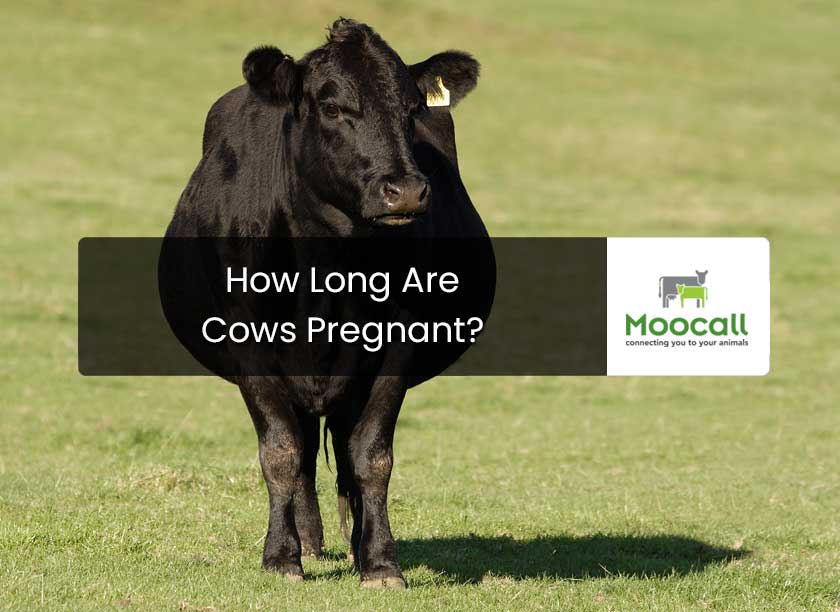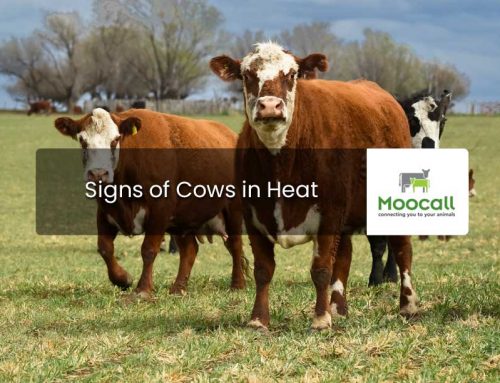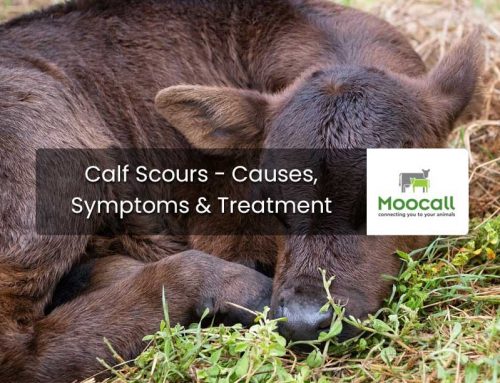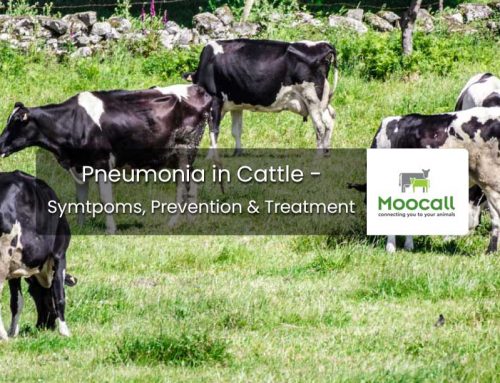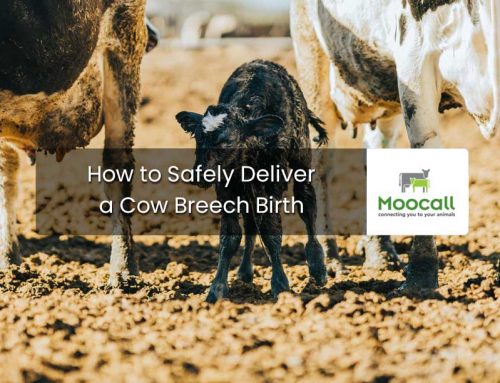Pregnancies vary from one animal to another, but in the case of cattle, how long are cows pregnant?
In the case of cows, pregnancy duration is very similar to that of humans!
Moreover, just as human babies can experience complications, so can calves.
Hence as a farmer or breeder, you need to be aware of certain key aspects relating to a cow’s pregnancy and the calving process.
Article Chapters
When are Cows Usually in Heat?
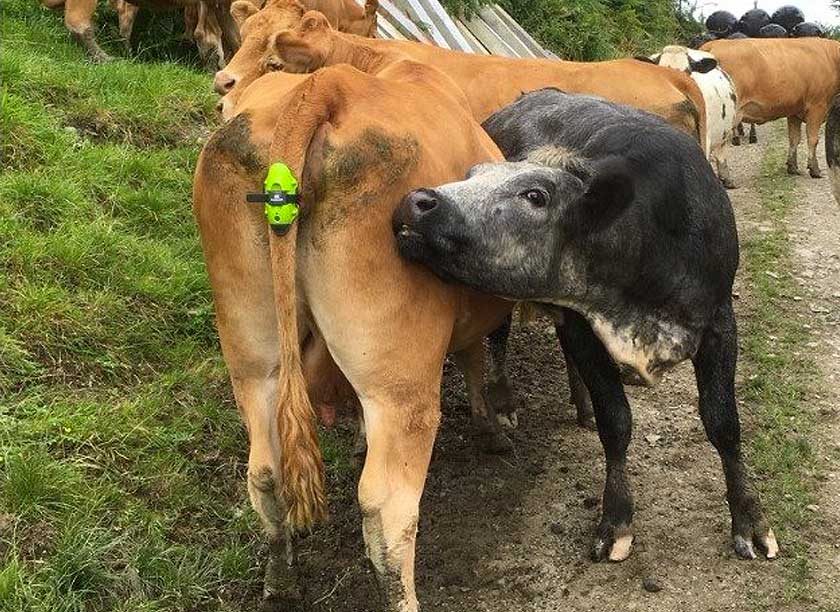
The time when a cow is in heat is defined by the period during which it will stand to be mounted by herd mates or a bull.
This usually occurs every 18-24 days.
It averages 21 days in the case of a cow that is not pregnant, and lasts between 14 and 15 hours.
Although at times, this can be as little as 2 hours, or as many as 30 hours.
Some symptoms associated with cows coming into heat include:
- smelling other cows
- attempting to ride
- acting restless
- bellowing
- nervousness & excitable
- swollen vulva
- clear discharge
When running a farm with several cows, it’s not easy to observe such signs and keep track of cows that are in heat.
However technology has come a long way in recent years with the emergence of artificial intelligence in farming that can detect heat in cows.
Many common devices that detect cows in heat come as collars, one of which is the highly regarded Moocall HEAT collar.
The Moocall HEAT collar is essentially a device that feeds back data to a smartphone with regards to any cows that show signs of heat.
You simply attach the ear tags to the herd, and scan the QR code with the app.
When a bull mates with the particular cow, you’ll be informed by means of an SMS text message, email or app alert.
You will then be able to get fertility data and other useful information too.
How Long is a Cow’s Gestation Period?

Image source: https://www.pexels.com/photo/herd-of-brown-cows-on-grass-field-4664221/
Much like humans, a cow’s pregnancy lasts about 9 months and 10 days.
In most cases, 283 days is considered to be the most common duration of pregnancy among the majority of cow breeds.
The gestation length also varies depending on the sex of the calf, and the number of calves it will be giving birth to.
Following conception, cow pregnancy typically lasts between 38 to 44 weeks.
Most cattle producers rely on planned impregnation to control pregnancy times.
When injecting semen has not been 100% effective, breeders sometimes opt for the Tidy Up bull option.
This is effectively where the bull is placed in the pen with the rest of the cows.
Any cows that did not manage to conceive through artificial insemination, will have a chance to do so by mating with the bull.
Generally, breeders wait about a month for this to occur.
Stages of Cow Pregnancy

Image Source: https://en.wikipedia.org/wiki/Estrous_cycle#Cattle
Cattle pregnancy is made up of three trimesters during which various things can occur, as explained below.
It’s important to be aware of these various stages to be more knowledgeable of how to act, especially with regards to any safety measures that may need to be taken.
Being well informed in this regard can also help in preventing emergency situations.
Stage 1
The first trimester spans from the first to the twelfth week.
During these three months, the foetus begins to develop.
During this stage, the cow’s uterus muscles become relaxed.
This helps to keep the calf protected inside.
It is possible that during the first 21 days, the cow could experience an unexpected abortion.
However, once 42 days lapse the chances of such an incident drops drastically to just 6%.
Hence, it’s very important to make sure the cow is taken care of and observed well during this initial period.
Stage 2
This phase spans until the 26th week of pregnancy.
This is a critical period, especially when it comes to the availability of nutrients that the cow can offer to nourish its little one.
This affects the healthy development of the calf, as well as the possibility of birthing issues or an unsuccessful labour.
Stage 3
Starting off from the 27th week until the end of the cow’s pregnancy, this is the last trimester.
The foetus will grow at a more rapid rate.
As a result, there will be a considerable increase in nutrients and supplements needed.
In fact, 70% of the calf’s development takes place during this period.
A new born healthy calf can weigh anywhere between 50lbs to 100lbs.
The principal part of the birthing procedure is cervical expansion, which can last between 2 and 6 hours.
It is normal for the cow to be somewhat unsettled during this time.
The birth generally takes between half an hour to two hours.
How to Tell When a Cow is Pregnant
There are some symptoms and signs that could give indications that a cow could be pregnant.
These include:
- You might notice foetal movements generally in the left flank.
- Swollen vulva.
- The cow might seem to be more restless than usual.
How Long is a Cow in Labour?
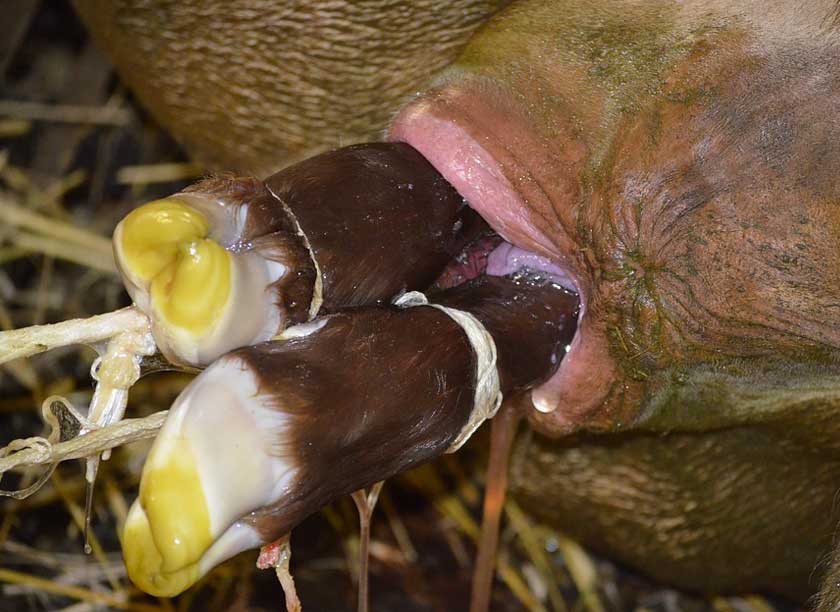
Image source: https://pixabay.com/photos/birth-give-birth-cow-calf-2715211/
A cow’s labour lasts between half an hour to two or sometimes, even three hours.
This depends on various aspects.
As a general rule, it is best to offer help to the cow if you notice that it has been in labour for over an hour and the water bag is visible.
How to Tell When a Cow is About to Give Birth
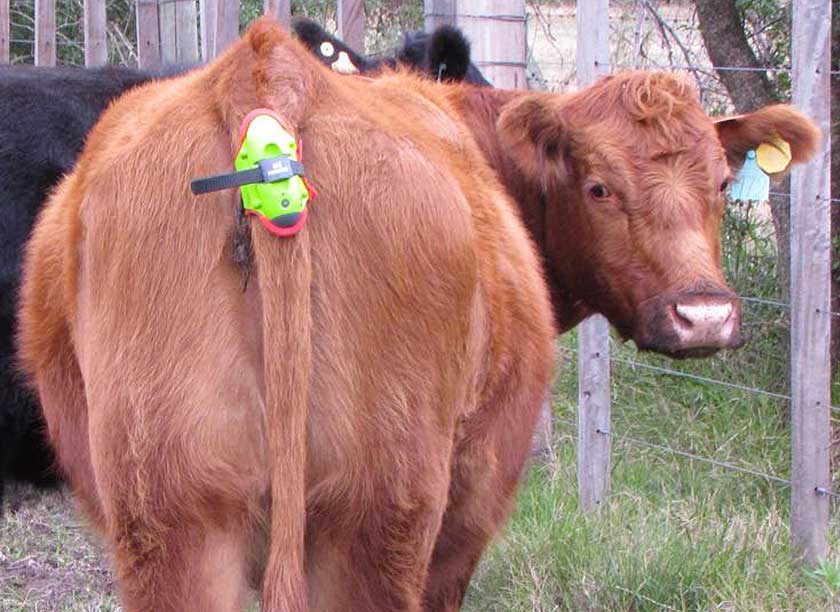
Pregnant Cow Wearing Moocall Calving Sensor
While you may have a general idea when the cow’s due date is, there may be various factors that could lead to an earlier delivery.
Besides, if you have many cows it may be difficult to keep track when a particular cow is about to give birth in a timely manner.
Having said that, it’s important to be aware of when the cow is about to give birth.
Unless you take certain safety measures and oversee the process, there could be complications during birth.
For this reason, you may wish to use a Moocall Calving Sensor which is a great help in monitoring pregnant cows.
Thanks to this ingenious device, you will be alerted right at the time of delivery should the cow require your assistance.
So besides eliminating the need to constantly monitor the cow, you’ll also have the peace of mind that even if you are not close by at the time, you’ll have a reliable alert system ready to tell you when her time has come to calve.
This is especially helpful if you have a large herd, as it will allow you to properly manage them during the busy calving season.
As soon as your pregnant cow is ready to calf, you will be alerted by the app.
It’s important to remember to attach the Moocall Calving Sensor to the pregnant cow’s tail before calving.
The Moocall Calving Sensor can help to reduce calf mortality rates as well as any problems during calving, since you will be able to act swiftly.
How Soon After Calving Can Cows Breed Again?
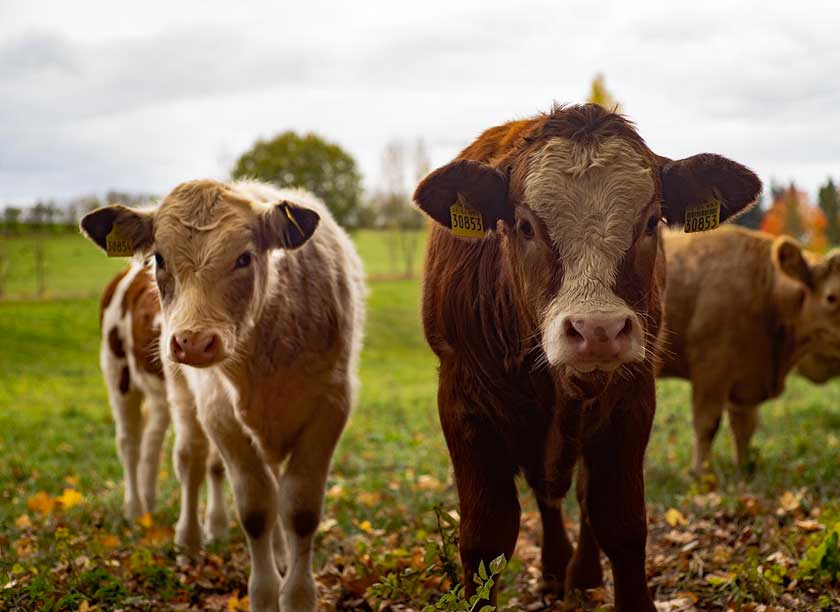
Image source: https://pixabay.com/photos/cows-cattle-farm-agriculture-4383468/
The answer to this question depends on a wide range of factors.
This includes:
- body weight and condition of the cow after calving
- their age
- dietary habits after calving during lactation
- whether there were any problems during the last calving process.
First off, calving in a body condition of below 4 (on a scale of 1 to 9) could lead to a longer postpartum interval.
For first calf cows, this will generally take a bit longer.
The cow’s diet is also imperative as it greatly affects the weight and the body condition.
For those cows that lose weight and body condition after calving, longer postpartum intervals are common.
Hence, considering all factors, the postpartum interval is generally between 50 and 60 days, with first calvers being at least 10 days longer.
Fun Facts About Calves
- A female calf is known as a heifer, whereas a male calf is called a bull.
- Calves weigh anywhere between 25 to 45 kilos when they’re born. Within the first year, they will gain around 300 kilos!
- Within as little as one hour from birth, a calf is able to stand and walk.
- Cows and calves have one stomach, which is divided into four compartments.
Calving Tips
Take a look at our insightful video for 10 top calving tips:
Conclusion
We hope that we offered a clearer idea with regards to cow pregnancies and the birthing period.
It’s truly amazing how modern technology can assist even in this field, helping in limiting problems at birth or reducing calf mortality.
As a farmer or breeder, it’s important to be aware of every aspect of the pregnancy.
This will empower you to offer the best support and assistance to your cows at such crucial moments.
